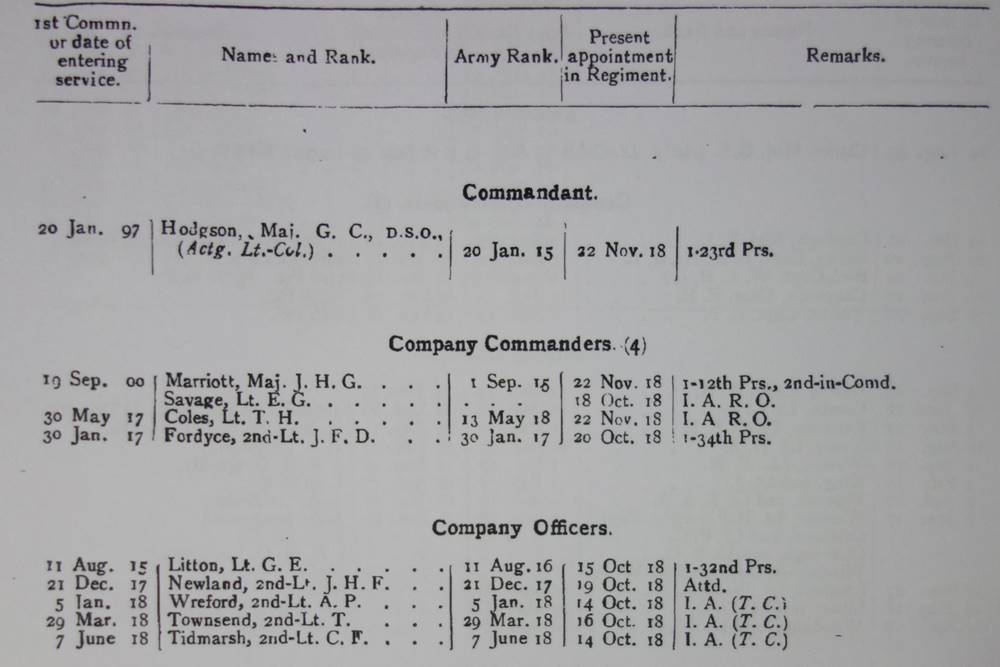This article on the short-lived 3rd Battalion 32nd Sikh Pioneers will help you to research the unit and the soldiers who served with it. I have also written articles about the 1st and 2nd Battalions and a series of guides to help you research soldiers who served in the Indian Army:
- 1st Battalion 32nd Sikh Pioneers
- 2nd Battalion 32nd Sikh Pioneers
- Guides to Researching Soldiers who Served in the Indian Army
The 3rd Battalion 32nd Sikh Pioneers
Lineage: The 3rd Battalion 32nd Sikh Pioneers was formed at Sialkot on 13 October 1918 and disbanded at some point between June and August 1919. For a history of the Regiment’s lineage see my page on the 1st Battalion 32nd Pioneers.
Class Composition of Battalion in 1919: 4 Companies of Mazbi and Ramdasia Sikhs.
The 3rd Battalion 32nd Sikh Pioneers was formed at Sialkot, India in what is now the Punjab Province of Pakistan from Mazbi and Ramdasia Sikhs on 13 October 1918. The Battalion served with Northern Command during its short existence. On the 22 November 1918, Acting Lieutenant-Colonel George Cecil Hodgson DSO was appointed to command the Battalion from the 23rd Sikh Pioneers. George Hodgson was a long-serving Indian Army officer who was commissioned on 20 January 1897 and had spent his entire career serving with Sikh pioneer battalions. Hodgson had been awarded the Distinguished Service Order for services during the British Invasion of Tibet. The extract below was taken from the January 1919 Indian Army List and shows the British officers serving with the Battalion. They were a mixture of officers attached from other pioneer battalions, those with a temporary commission or from the Indian Army Reserve of Officers.
At the end of 1918, the Battalion was still stationed at Sialkot and was reported to be “under formation”. The Battalion was still at Sialkot when it was disbanded at some point between June and August 1919. Before the Battalion was disbanded, it had been inspected by Brigadier General Leslie Warner Yule Campbell, C.M.G. who commanded the Sialkot Brigade. In a report dated 11 January 1919, Campbell wrote:
Training: Satisfactory.
Physique: Satisfactory.
Arms and Equipment: Complete.
General Remarks: This Unit was formed in October 1918 with a nucleus of 250 trained soldiers and 350 recruits. It is now being reduced to a cadre of 250 trained soldiers and 100 recruits.
Interior Economy
Mess: No Officers Mess.
Discipline: Satisfactory.
Clothing: Not yet completed.
Accounts, etc.: In good order.
Health: Good.
General Remarks: The Unit is handicapped by having no proper lines to go into, when the Palestine lines are ready, the unit will occupy them. Interior economy satisfactory.
Confidential review reports on Indian Army units, depots, British officers, etc. for 1918-1919: IOR/L/MIL/7/17030
War Diaries of the 3rd Battalion 32nd Sikh Pioneers
A war diary was written by a British officer and recorded a unit’s location and activities. Unfortunately, there are no war diaries for the 3rd Battalion 32nd Sikh Pioneers.
Further Sources for the 3rd Battalion 32nd Sikh Pioneers
For information regarding British and Indian officers who served with the 3rd Battalion 32nd Sikh Pioneers, the Indian Army List can be consulted. There is a single confidential report held for the Battalion at the British Library, most of which is transcribed above. This document also contains very brief reports on each British officer serving with the Battalion: Confidential review reports on Indian Army units, depots, British officers, etc. for 1918-1919: IOR/L/MIL/7/17030.

